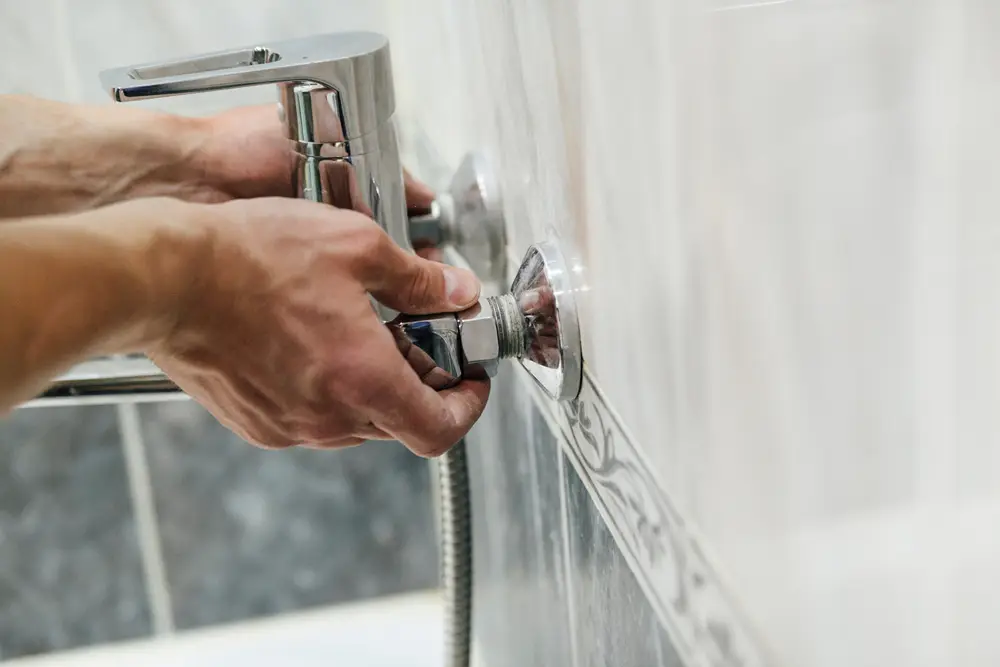
Switching out your bathtub faucet is a great way to upgrade your bathroom. Newer faucet models often have a variety of exciting features, including better water pressure, detailed temperature control, and an upgraded appearance. But before getting a new faucet, you need to know how to replace your old one.
Below, we’ll explain how to replace a bathtub faucet and when to call a professional plumber. With expert guidance from Mr. Rooter® Plumbing on the following topics, you’ll know exactly how to install your preferred faucet:
- Threaded vs. Slip-on Spouts
- What to do Before Replacing Your Faucet
- Steps to Replace a Bathtub Faucet
- Bathtub Faucet Replacement FAQ
Threaded vs. Slip-on Spouts
Before you start unscrewing your old faucet, determine the type of faucet that will go in its place. Most bathtub spouts work similarly, but it’s important to be aware of their configurations - threaded and slip-on.
As the name implies, slip-on spouts slide over the water stub-out pipe emerging from the wall. They are then held in place by a set screw.
Threaded spouts, or screw-on spouts, are threaded and screwed onto the stub-out pipe, eliminating the need for a set screw.
What to Do Before Replacing Your Faucet
To replace a faucet, you need to gather the correct tools and prepare the area. For this project, you’ll need plumber’s tape (Teflon tape), an adjustable wrench, a screwdriver, a putty knife, any included mounting hardware, and gloves.
Prepare the area by placing a towel down below the faucet. This will prevent tub damage from dropped tools. The towel should also cover the drain opening to stop small objects from falling down the drain and causing clogs.
Steps to Replace a Bathtub Faucet
Once the area is prepared and your tools are gathered, it’s time to replace the bathtub faucet. Consider laying a folded towel or cushion on the outside of the tub to protect your knees, as you’ll need to kneel for this project:
- Shut off the water: Use the water main shut-off to turn off the water while you work on this task.
- Remove the existing spout: If the spout is a slip-on, remove the set screw and firmly pull the spout from the wall using both hands. For threaded spouts, use a pipe wrench or locking pliers to tightly grip the spout. Once the tool is secure, use it to rotate the spout counterclockwise until it comes free.
- Replace the bathtub cartridge: With the spout removed, you can access the cartridge. This device controls water temperature and flow. To get to the cartridge, remove the screws that hold the escutcheon plate in place and remove the plate. Next, use a screwdriver to remove the clip holding the cartridge. Now that the cartridge is exposed, grab it using pliers and pull it free. Finally, insert the new cartridge and replace the O-rings if needed.
- Replace the faucet handles: Ensure your handles and stems match the old ones. For example, if you have a two-handle system, you can’t install a one-handle system. Place the new stem into the slot and tighten it by turning clockwise. Slide the handle onto the stem until it reaches the wall, then use the included screw to secure it.
- Install the new spout: If you’re installing a threaded spout, wrap plumber’s tape around the threading on the wall pipe. Next, screw the spout into place and tighten it with pliers or a wrench until it is fully secure. If you have a slip-on spout, slide it onto the pipe until it meets the wall, then install the set screw. Apply fresh caulk at the meeting point between the base of the spout and the wall.
Bathtub Faucet Replacement FAQ
Can I replace a bathtub faucet myself?
Yes, you can replace a bathtub faucet using widely available tools and hardware. However, there are a few things to remember when considering this home plumbing task. Some faucet replacement projects are best left to professional plumbers, as they require you to adjust the wall pipes and plumbing system.
Bathtub faucet replacement is possible for a homeowner if the replacement faucet setup matches the existing setup. For example, if you plan to replace your single-handle faucet with a newer model that is also a single-handle model, then replacement is doable.
You shouldn’t attempt a replacement if you plan to replace the faucet with a different model type. Changing a one-handle system to a two-handle system requires more plumbing work than the average DIY plumber can successfully complete. In this situation, it is best to hire a professional.
Just because replacing a tub faucet yourself is possible doesn’t mean you have to. If you’re concerned about attempting this installation on your own, Mr. Rooter is just a call away.
Call Mr. Rooter Plumbing for Prompt Bathtub Faucet Replacement
Replacing a bathtub faucet is an affordable way to upgrade your bathroom. Our team can help you install any type of tub faucet you want, even if it doesn’t match the configuration of your previous fixture. Contact us today for help with bathtub faucet replacements and more.

